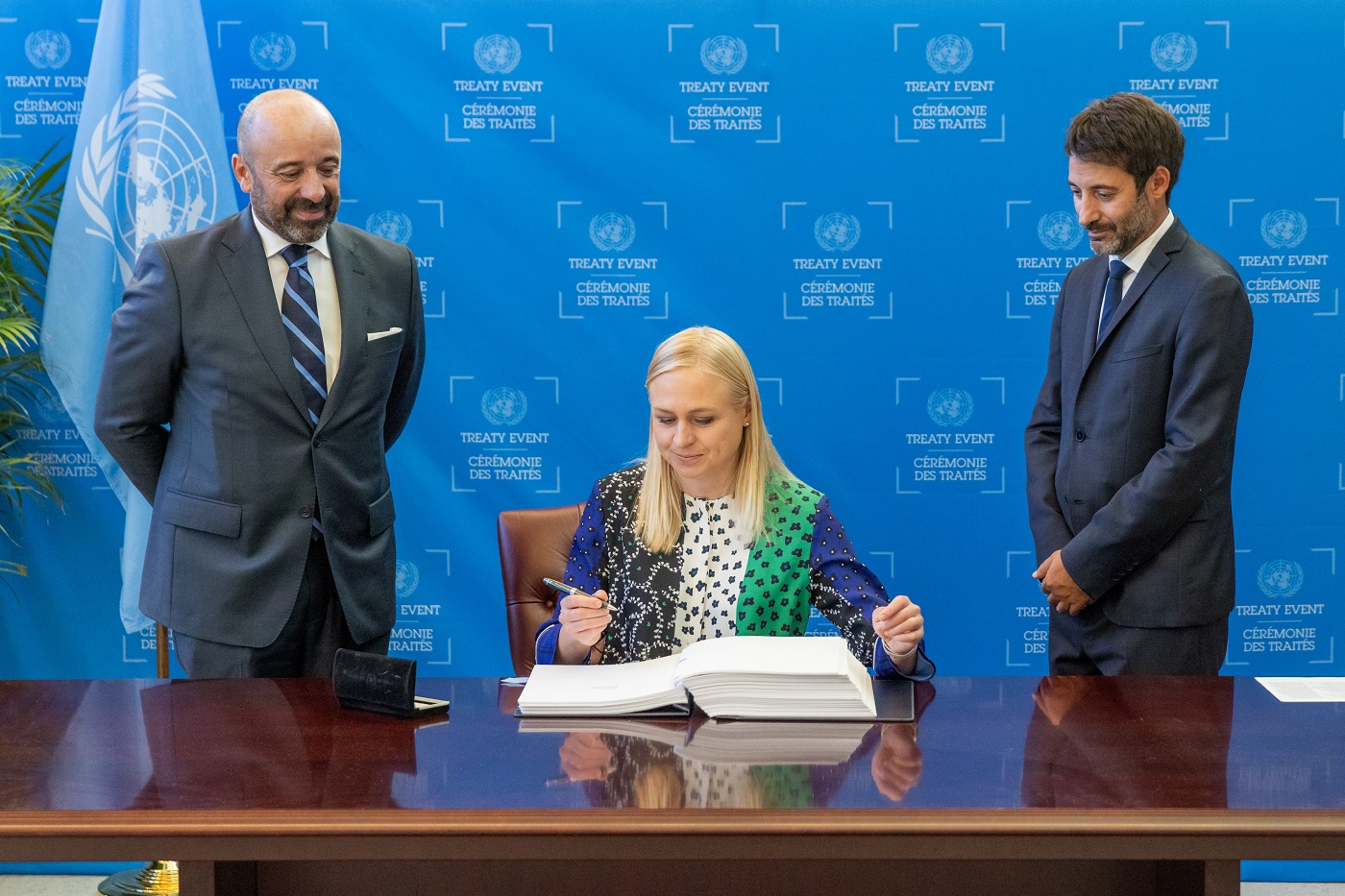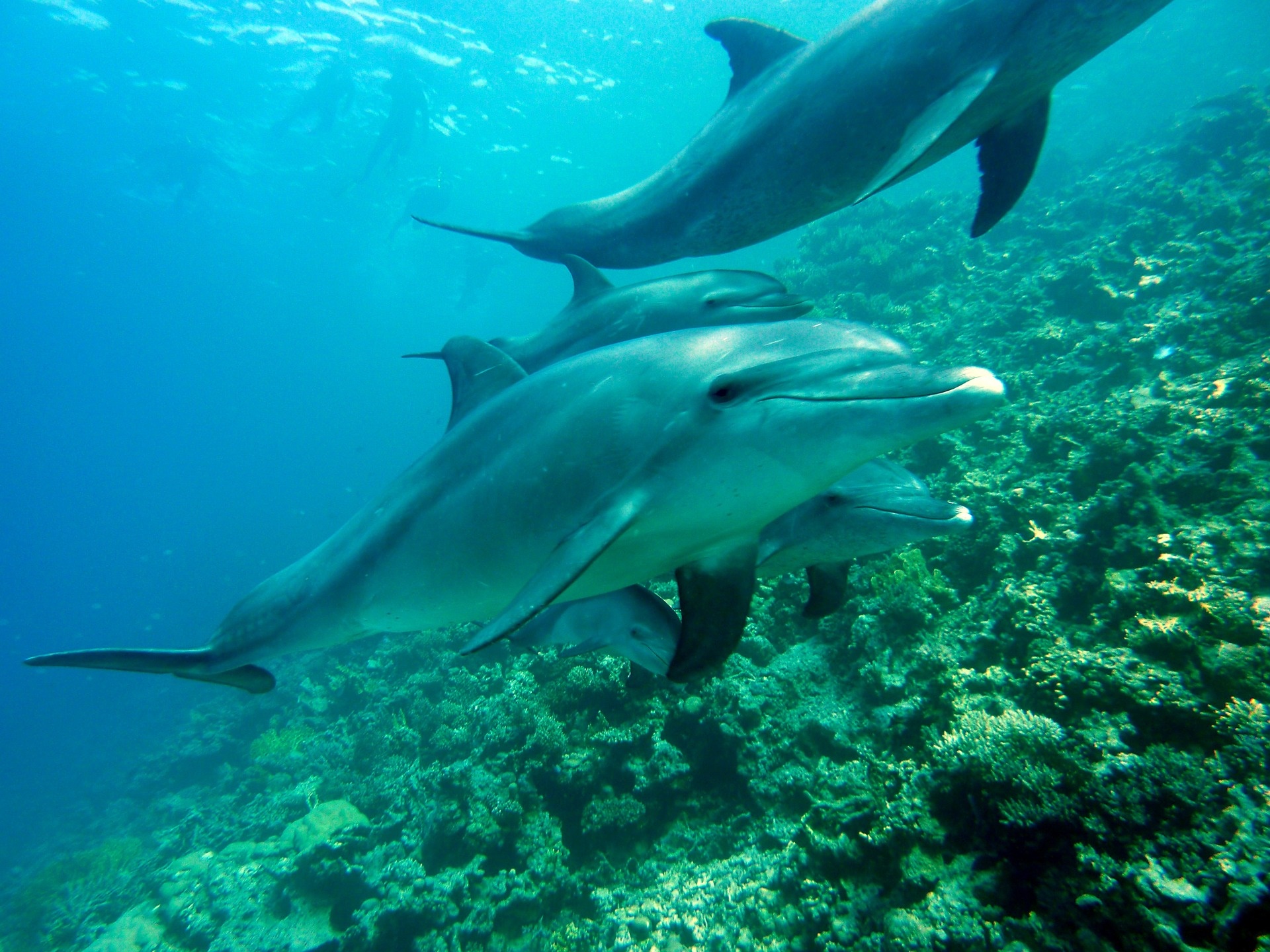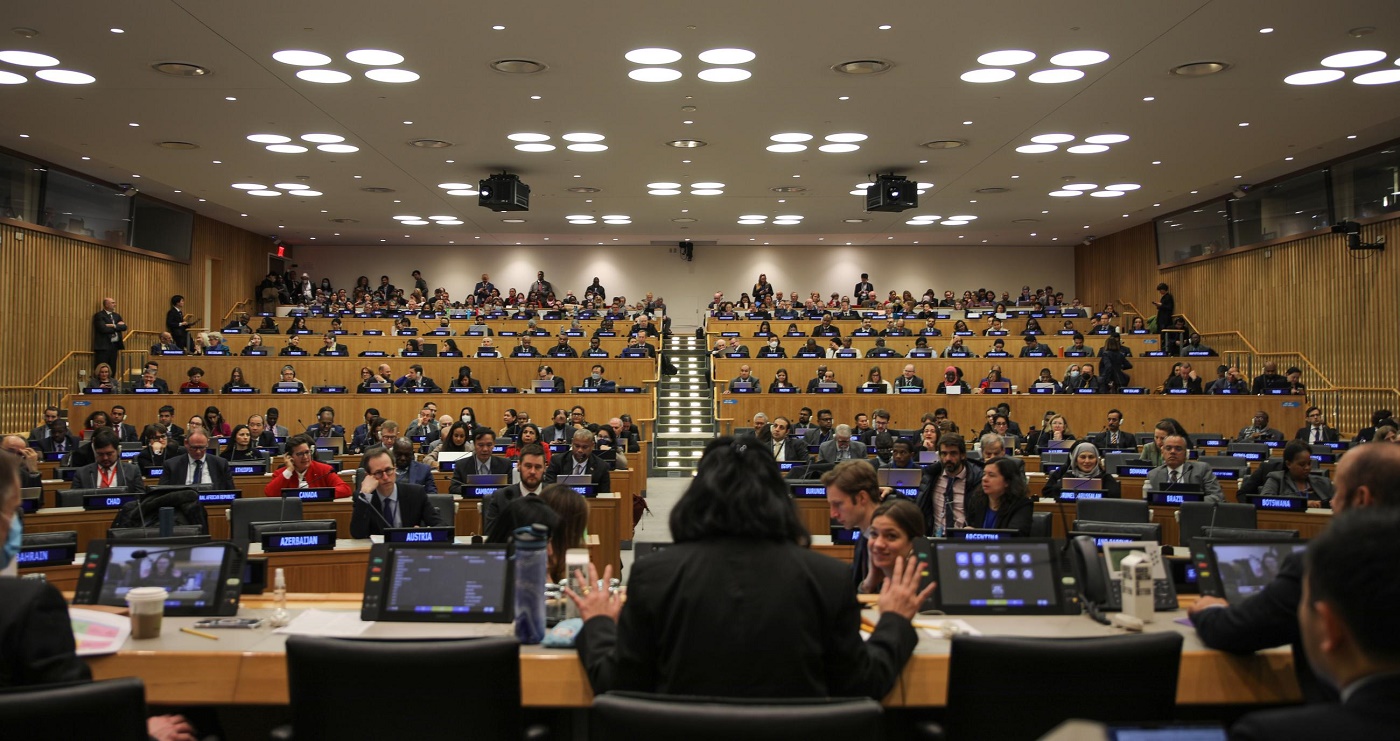High seas and deep seabed now protected under new UN agreement
Last June, an Agreement on the Conservation and Sustainable Use of Marine Biological Diversity of Areas Beyond National Jurisdiction was adopted at the United Nations. The agreement is also known as the BBNJ Agreement (biodiversity beyond national jurisdiction) or, more poetically, as the High Seas Treaty. It is an important milestone in the protection of the oceans. The BBNJ Agreement was opened for signature in September during the high-level week of the UN General Assembly. Minister for Foreign Affairs Elina Valtonen signed it for Finland.
The BBNJ Agreement was adopted by consensus at the UN in June. Only Russia dissociated from the consensus. Despite the fairly short interval between the adoption of the agreement and its opening for signature, a great number of nations from all continents signed the agreement already during the high-level week. The signatories included the EU and nearly all of the EU Member States as well as Brazil, China and the United States.

Target of protecting 30 per cent of the world’s marine areas
The BBNJ Agreement applies to all international waters (areas beyond national jurisdiction), covering more than 60 per cent of the world’s seas and almost half of the planet’s surface. For example, the agreement sets up a procedure to establish marine protected areas in international waters, where protected areas now account for only about one per cent.
The Conference of the Parties to the UN Convention on Biological Diversity agreed in Montreal in December 2022 to ensure that 30 per cent of the world’s marine areas are protected by 2030. The new agreement is instrumental for achieving this target.

Holistic approach to the protection of the high seas and deep seabed
At present, decisions to protect the marine environment can only be made for specific geographical areas (e.g. under the Convention for the Protection of the Marine Environment of the North-East Atlantic) or for specific activities (e.g. within the remit of the International Maritime Organization). This means that any measures agreed upon only apply to a specific region or activities falling within the jurisdiction of a specific organisation. The new BBNJ Agreement sets out procedures for establishing protection measures in ways that take account of the cumulative impacts of different activities. In addition, the Parties undertake to promote the objectives of the agreement in all organisations they are party to.
Secondly, the agreement requires assessment of potential impacts on the marine environment of planned activities that take place in international waters.
Thirdly, the agreement applies to marine genetic resources. Information must be shared on the collection and utilisation of marine genetic resources. In addition, the agreement requires sharing of the monetary and non-monetary benefits arising from activities with respect to marine genetic resources in a fair and equitable manner.
A fourth element of the agreement is the obligation to cooperate in capacity-building and transfer of marine technology to developing countries. A new financial mechanism will be used to support developing countries in the implementation of the agreement.
A secretariat and a conference of the parties will be created to support the implementation of the agreement.
Entry into force as early as 2025?
The BBNJ Agreement offers much needed tools for preventing biodiversity loss, and it is necessary to put these tools into effective use. The first step is to bring the agreement into force internationally. This requires ratification by sixty States. An ambitious goal for the agreement’s entry into force is the year 2025, coinciding with the third UN Ocean Conference in Nice.

“In Finland, the ratification process also includes preparation of the national legislation to implement the agreement. Actions at EU level may also be necessary,” says Senior Ministerial Adviser Sari Mäkelä, who represented Finland in the agreement negotiations.
Beyond ratification, the Parties to the Agreement must prepare proposals for concrete conservation measures for adoption by the Conference of the Parties once the agreement enters into force.
Support for protection of the Arctic Ocean
The first objective of Finland and the whole of the EU was to enable the creation of a network of marine protected areas in areas beyond national jurisdiction (ABNJ). A second objective was the obligation to conduct environmental impact assessments of ABNJ activities. These objectives were achieved in the negotiations.
The BBNJ Agreement and its effective implementation is a condition for establishing a comprehensive network of marine protected areas in the Arctic Ocean, as outlined in Finland’s Arctic Strategy.
Success by the UN
The BBNJ Agreement has been applauded as a historic achievement and as the most significant environmental agreement since the Paris Agreement.
“The agreement’s adoption shows the UN’s ability to take action to protect our planet, despite the current international political situation. The pace of signatures is promising, but I hope the ratification process will be equally swift,” Mäkelä says.

The BBNJ Agreement was concluded after nearly two decades of negotiations. The preparatory work started already in 2004 and culminated in a tough two-week period at the UN Headquarters in New York. As always, the last week of the negotiations saw talks that lasted until the small hours and an increasingly tense atmosphere.
“I am sure that no one suspected on the morning of the final Friday that we would not be leaving the UN Headquarters until late on Saturday evening, after an almost 40-hour final stretch. A wide array of ways of fighting fatigue could be seen among the delegates in the meeting hall and corridors, but somehow they always found a new burst of energy to defend their position. No wonder that all emotions came to a head at the final session when the chair confirmed the agreement’s adoption by saying: ‘The ship has sailed to shore’.”
Background information:
- The United Nations Convention on the Law of the Sea entered into force in 1994. It governs all uses of the world’s oceans and seas and their resources and establishes the rights and obligations of States with regard to protection of the marine environment. It sets out the legal framework within which all activities in the oceans and seas must be carried out. The BBNJ Agreement specifies and implements some of the convention’s more general provisions.
- There are no areas beyond national jurisdiction in the Baltic Sea because of its small size. The exclusive economic zones and the territorial seas of the Baltic Sea States cover all of the Baltic Sea, and the BBNJ Agreement does not apply to the exclusive economic zones or the territorial sea of a coastal State.
